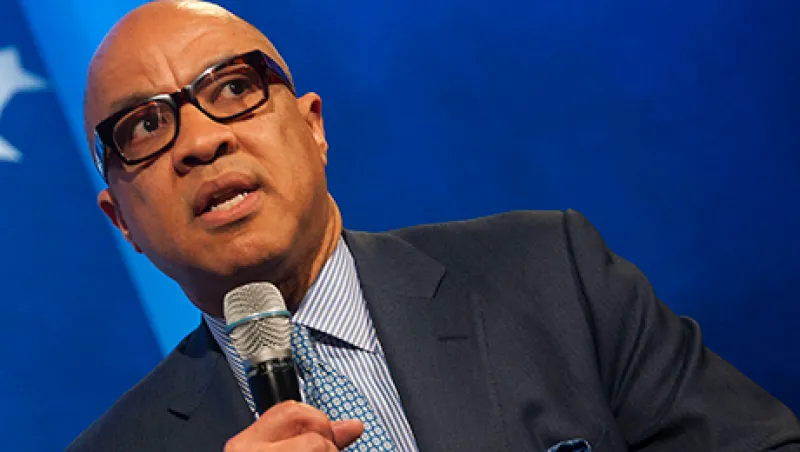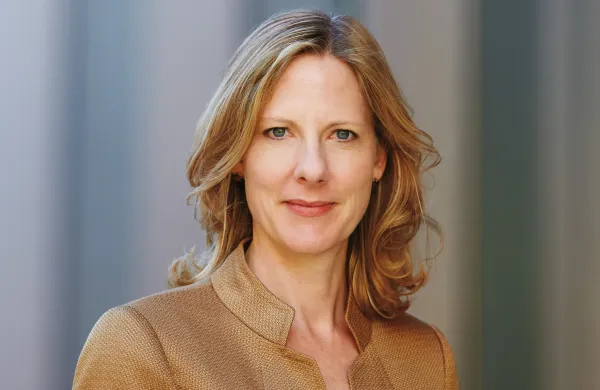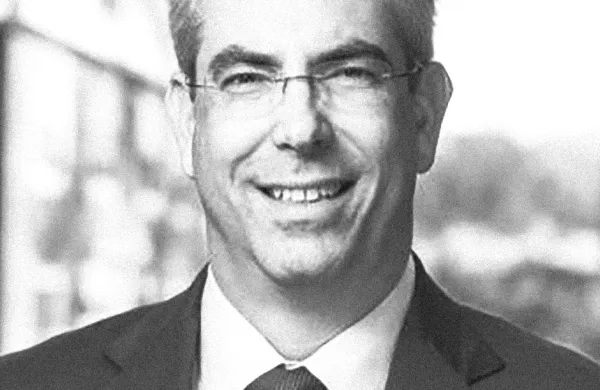Darren Walker spoke back in May as part of a plenary session at the Mission Investors Exchange (MIE) conference — ground zero for impact investing aficionados — in Baltimore. The CEO of the Ford Foundation made an impassioned plea for tearing down the walls between the grantmaking functions of foundations and their investment offices.
The investment policy for the Ford Foundation’s $12 billion endowment, Walker said to great applause, “is that we, save for a few screens, seek to maximize returns so that we can have more money for our endowment and more money to give away.” He continued, “I do not think that as a policy, that is defensible.” Walker believes that Ford’s endowment should be considering the impact that its dollars have upon the world in which it invests.
Impact investing means focusing on the social and environmental effect of an investment as well as the economic return. It has become increasingly popular among nonprofits and many high-net-worth individuals as a way to use the tools of capital markets to tackle major societal issues, such as climate change, global poverty and world hunger. It remains an embarrassing truth for some of the foundations leading the impact and sustainable investing movement, however, that whereas they talk the talk around responsible investing with their grants and program-related investing, as well as their foundation leadership, their investment office rarely walks the walk by committing dollars to the types of investments impact fans champion.
Walker identified a big reason why investors have been reluctant to take impact seriously in more of his remarks at MIE. (It’s worth listening to the entire MIE panel if you have the time.) “We cannot kid ourselves in not accepting that this idea of impact investing has been framed as oppositional to our core endowment investment,” Walker said. As long as that continues, “we will fail at scaling and taking this to the kind of adaptation that we need in order to have the most impact.”
Some have branded impact investing as somehow not financial. Most institutional investors believe that an impact investment means sacrificing returns. That, however, does not need to be the case. Walker and others at Ford are now pushing to get that foundation’s investment office to inject values into their investment approach.
One problem is that even if Walker gets his endowment office to embrace impact investing — and it’s hard to understate what a big ask that is — the entire foundation investment community is still tiny. Even the foundations that have gone “all in” — the F.B. Heron Foundation has completely aligned its mission with its impact investment strategy, and the Rockefeller Brothers Fund is seeking to do something similar — are not large.
Rockefeller Brothers Fund is $800 million. Heron’s endowment is a relatively scant $300 million. The entire U.S. foundation capital pool is only $715 billion. At first blush, that might sound like a lot of money, but it really isn’t when considered in terms of the scale of the global issues that must be addressed.
We know that by 2030 we will need to be investing $1 trillion annually if we are to close the green energy infrastructure investment gap. Many trillions of dollars will also be needed if we are to reach the U.N. Sustainable Development Goals, announced last year, by 2030. To reach these goals, institutional investors need to wake up. That means getting into the impact investing conversation — a conversation that to date has been dominated by foundations and high-net-worth individuals.
A few years ago I had lunch with a friend who at the time was a senior executive at a large investment management firm. She had just completed a comprehensive tour and met with all the major fiduciaries in the U.S. One of her conclusions from her conversations was that “the agency issue is a real problem.” In other words, the outsourcing of responsibility by asset owners has become a hot topic.
Surrounded and guided by asset managers and investment consultants — allocating investments to boxes according to models, constrained by benchmarks and tracking errors — asset owners, more often than not, do not know what they are investing in. One consequence of this outsourcing is that the left hand often does not know what the right hand is doing. If, for example, I think climate change is a sufficient risk to fossil fuel assets to be divesting my equity portfolio from the major energy extractors, why am I as an asset owner— or, more likely, the managers I hire — also investing in carbon infrastructure through my private equity, real asset, hedge fund and distressed-debt portfolios? The argument that these assets still have value in the immediate term holds less water when I recognize the opportunity cost of supporting this type of infrastructure over the much-needed clean energy solutions.
It is not that most institutions are not giving this matter any thought. The rise of so-called ESG — environmental, socially responsible and corporate governance — investing has been given much coverage, here at Institutional Investor and elsewhere. But deep consideration about ESG’s overall economic impact is still largely lacking. Along with governments and corporations, institutional asset owners are the biggest economic engine we’ve got. They don’t track the economy. They make it. Institutional investors could make big changes — quickly.
As Heron Foundation president Clara Miller likes to say, All investments have impact. We just don’t always know what those impacts are. All institutional investors need to be awakened to the consequences of their actions, because if they are, they are likely to make better, more sustainable investment decisions that will help support the economy and the planet over the long term. This, in turn, is a much more powerful model of impact investing. Thought about from this perspective, investing trillions of dollars in clean energy or making commitments to third-tier-city infrastructure is no longer a nice-to-have. It is a need-to-do.
An oft-heard criticism of impact investors, particularly among high-net-worth individuals, is that they never actually commit any capital. They might talk endlessly, at conferences and elsewhere, about the importance of impact and how much they want to align their social mission with their money. But when it comes to action, it is all too easy to let the perfect become the enemy of the good.
Once financial returns are no longer the sole metric of success, people get distracted by the question of which impact is the most effective. Are happy cows a good impact investment? Or does the methane produced by cattle mean that even the happiest herd eating the greenest grass is not efficient from a climate change perspective, and we should all be eating synthetic meat (ugh)? If you want to invest in sustainable agriculture, what type of soil is the best? Who knows? I certainly don’t — nor do most allocators. But as long as impact investing is defined as a better form of personal philanthropy, as it still is for most wealthy individuals, rather than a must-do, as it should be for all institutional asset owners, then it is possible to get sucked into an endless vortex of just these types of questions.
The scale and the urgency of the problems that impact investing is seeking to tackle demand institutional solutions. A question for Darren Walker is whether his time is best spent convincing the Ford Foundation’s investment office that his way is the best way or whether his argument is going to have more credence with the larger institutions, such as pension funds and sovereigns? Then again, it may be that other voices — from the asset management community and elsewhere — are more credible when it comes to getting institutions to believe in their impact.
There have been efforts to get institutional investors into impact. Important groundwork was laid last year when the Department of Labor clarified the rules around ERISA fiduciaries’ ability to include so-called nonfinancial factors in their investment decision making. Certain individuals such as Walker and Dave Chen, chair of Equilibrium Capital Group, have really led the charge in directing institutions to impact. (Chen prefers the term “sustainability,” which is less likely to have institutional investors running for the hills.)
My friend and colleague Josh Friedlander, editor of Euromoney Institutional Investor hedge fund publication Absolute Return, often laughs at my interest in impact investing. I think he wonders when I’m going to get back to proper financial journalism, things like writing about the June implosion of Visium Asset Management. To me, anyway, impact today has many similarities with the early days of the hedge fund industry. The irony, of course, is that if and when impact grows into a true institutional strategy, many of the early participants — a group with which there is plenty of overlap with the contingent at MIE — are going to find they no longer have a seat at the table. It’s a sacrifice worth making.
Follow Imogen Rose-Smith on Twitter at @imogennyc.






